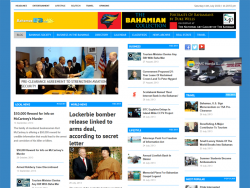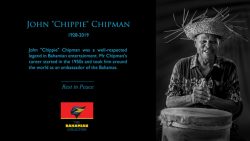The past decade has seen the greatest change to our society since the advent of majority rule in the 1960s ᆳ but most Bahamians donᄍt know about it.
We refer, of course, to the Internet ᆳ an electronic communications network created in America in 1983 that first appeared on our horizon in 1995. It is now available to most Bahamians as an advanced broadband service, but only a fraction of the population takes advantage of it.
The unfortunate reality that we are not yet a ‘wired’ society was brought home during the recent Bahamas Web Awards (created by Bahamas B2B), which evaluated over 40 Bahamian web sites. The event underlined just how far we have come in our exploitation of the Internet ᆳ and how far we have yet to go.
The level of sophistication displayed on those Web sites was Impressive (this writer was a judge). Entries included government agencies, businesses, churches, schools and civic groups. The Tiamo eco-resort on South Andros won top place overall. By all accounts, Tiamo is enormously successful, and it markets itself only over the Internet.
Bahamian Internet pioneer Brian Nutt was the keynote speaker at the event, held at the British Colonial Hilton. He is also president of the Bahamas Employers Confederation and received a special OHall of Fame’ citation at the awards.
Mr Nutt spoke about the invention of the World Wide Web by Tim Berners Lee in 1990, which made the Internet useful to ordinary people. Within just four years there were millions of surfers visiting over 10,000 Web sites…and growth has been exponential ever since. There are now almost a billion users and millions of sites.
But the Bahamas lags far behind. Despite (or rather because of) Batelco’s monopoly, the Internet was introduced here as a sideline by the country’s first private radio station – 100 Jamz, which is mostly owned by a 100-year-old publishing enterprise called the Tribune.
Jamz used its satellite uplink (built for radio broadcasts to Grand Bahama) to launch the country’s first Internet service in mid-1995…in the teeth of predictable opposition from the public sector.
My company ᆳ Media Enterprises ᆳ signed up for this pioneering dial-up service in September, 1995, at the invitation of Robert Carron. We used the brand-new Netscape browser, which had commercialised a piece of university software known as Mosaic.
But before this, we had been one of a few score subscribers using a primitive dial-up email system administered by the College of the Bahamas. Initiated in 1993 by the Organisation of American States, this let users download mail twice a day. The local administrators were COB academics Barbara Armbrister and Neil Sealey.
“No-one was very happy with this system



